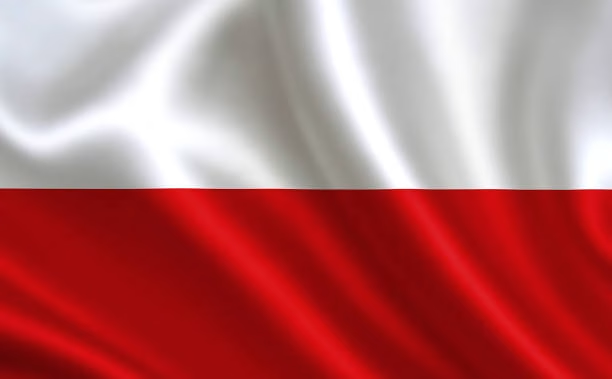Uncover the factors driving the decline of small US dairy farms, examine the resulting economic and environmental repercussions, and consider actionable policy strategies for their resurgence.
Consider an urgent problem in rural America, akin to a crime scene that demands immediate attention. The victims in this case are the small dairy farms, historically the backbone of their communities, now struggling against the dominance of larger businesses. As investigators, we meticulously examine the dramatic shifts in the U.S. dairy business over the past few decades. Let’s delve into the reasons, effects, and remedies for the urgent revival of small dairy farms.
The downturn not only affects farmers but also tears at the fabric of rural America, impacting the entire community. We’ll delve into the core reasons, analyze the economic and environmental consequences, and strongly advocate for legislative changes to ensure a more sustainable future for small dairy farms. We want to underscore the critical efforts needed to revitalize and maintain small dairy farms nationwide for the sake of these communities.
| Year | Number of Small Dairies | Number of Large Dairies | Average Cows per Small Dairy | Average Cows per Large Dairy |
| 1997 | 71,032 | 5,198 | 50 | 500 |
| 2007 | 51,012 | 7,480 | 70 | 700 |
| 2017 | 27,415 | 10,053 | 100 | 900 |
| 2022 | 24,082 | 12,022 | 120 | 1,000 |
Economic and Environmental Strains: The Twin Burdens of Small Dairy Farms
Small dairy farmers confront complex economic challenges that are only getting worse. Since 1998, these farms have generated cumulative 10-year net returns of less than -$10/cwt, indicating ongoing financial duress. In 2023, volatile market circumstances exacerbated these issues, including a significant market drop and increased feed and fuel expenses. Small dairies are struggling to thrive, and many are leaving the business.
Meanwhile, the expansion of large-scale dairy farms has severe environmental repercussions. Mega-dairies, with herds ranging from 1,000 to 25,000 cows, currently provide more than 70% of US milk. Large farms benefit from economies of scale but contribute to climate change by increasing methane emissions. They also create significant air and water pollution, endangering the health of adjacent residents and poisoning local water sources.
The Relentless Decline of Family-Scale Farms: Economic Hardships in the US Dairy Industry
Small farms struggle financially with growing production costs that outpace milk prices. The typical American dairy farm has only been profitable twice in the previous two decades, leaving small-scale farmers in heavy debt.
Small farmers are experiencing increased production costs that surpass milk prices. Many small-scale farmers are in debt, barely making two profits in the past two decades. Sarah Lloyd, a Wisconsin dairy farmer, said, “The consolidation of the dairy industry has siphoned life out of rural America.” Small farms suffer financial collapse, resulting in mounting debts, bankruptcies, and farmer suicides. The socioeconomic fabric of rural communities deteriorates, emphasizing the necessity for a significant rethink of dairy policy.
As small farms falter, they risk financial devastation, rising debts, bankruptcies, and farmer suicides. The socioeconomic fabric of rural communities deteriorates, emphasizing the critical need for a complete revision of dairy policy to protect small-scale farmers against monopolistic corporations.
| Year | Total Dairy Farms | Milk Production (Billion Pounds) | Average Operating Margin (%) | Dairy Exports (Billion USD) |
| 2003 | 70,375 | 170 | 3% | 0.77 |
| 2008 | 62,500 | 189 | 2% | 3.0 |
| 2013 | 49,331 | 201 | 1.5% | 5.5 |
| 2018 | 37,468 | 218 | 1% | 5.6 |
| 2022 | 36,104 | 220 | 0.5% | 6.3 |
The Monopolistic Squeeze: How Dairy Cooperatives Are Reshaping the Industry
The growing concentration of the dairy business, with Dairy Farmers of America (DFA), Land O’Lakes, and California Dairies owning 83% of milk sales, has marginalized small-scale farms, driving them to the edge. Rising production costs and low milk prices put small dairy producers at a competitive disadvantage, undermining the sector’s variety and resilience. Family farms must choose whether to develop or abandon an enterprise passed down through generations.
Dairy cooperatives primarily cater to larger dairies, reinforcing the consolidation cycle and exacerbating challenges for smaller operations. These cooperatives can negotiate better prices and establish strong supply chains that benefit large-scale producers, but smaller farms lack the volume to leverage the same benefits. This discrepancy manifests in various ways:
- Bulk Pricing Models: Cooperatives offer pricing models favoring high-volume producers, making it hard for smaller farms to compete.
- Priority Access: Larger dairies enjoy priority access to cooperative resources, leaving smaller farms with limited support.
- Logistical Support: Infrastructure built by cooperatives caters to large producers, providing inadequate support for smaller farms.
- Market Influence: Cooperatives’ market influence shapes industry policies to the advantage of larger operations, sidelining smaller competitors.
This emphasis on bigger dairies feeds a vicious cycle in which small farmers struggle to stay in business. Optimized resource arrangements for large-scale production hurt small farmers’ livelihoods and the fabric of rural communities that rely on them.
From Stability to Strain: How 2000s Policy Shifts Unraveled the US Dairy Industry
In the early 2000s, U.S. dairy policy experienced significant changes:
- End of Dairy Price Supports: These supports once provided a safety net for small farms. Their removal led to financial instability.
- End of Grain Supply Management: Previously, policies kept feed prices stable. Their discontinuation increased feed costs, squeezing small farms’ profit margins.
- Export-Focused Policies: Aimed to integrate U.S. dairy products into the global market, favoring large-scale, industrial farms.
- Economies of Scale: Larger farms could produce milk cheaper, putting small farms at a competitive disadvantage.
These developments weakened family-owned dairies, compelling them to expand or leave the sector. The new laws hastened the demise of small farms, driving the US dairy sector toward large-scale, export-oriented production.
Strategic Policy Solutions: A Multifaceted Approach to Revitalize Small Dairy Farms
Experts support strategic initiatives to fight the demise of small dairy farmers. Implementing a federal supply management scheme may help to balance supply and demand while preventing export market flooding. Legislative efforts to block agricultural mergers and abolish industrial farms by 2040 are critical. Restoring supply management and revamping the rural safety net in the following agricultural Bill is vital. Setting mandatory objectives for reducing greenhouse gas and methane emissions will help to reduce environmental damage. Requiring dairy corporations to disclose emissions and meet science-based objectives would increase accountability while revitalizing local dairy farms and ensuring their economic and ecological viability.
In addition to legislation, education, and assistance activities are critical for helping small dairy producers adapt to changing market circumstances. Farmers might benefit from programs that teach them financial literacy and business management skills. Furthermore, giving grants and low-interest loans will provide crucial financial assistance, focusing on improving agricultural infrastructure, promoting sustainable practices, and innovating technologies to reduce efficiency and environmental effects.
Community support and consumer awareness are essential. Promoting locally produced dairy products and educating customers about the advantages of small farms may increase demand and provide a competitive advantage. Establishing farmer cooperatives may give greater market access, reduced expenses, and more substantial bargaining power versus more prominent corporations.
Promoting research and development in sustainable dairy farming is vital. This involves establishing feed techniques to minimize methane emissions, investigating alternative energy, and strengthening resistance to climate change. Public-private collaborations may spur innovation, allowing farmers to remain profitable while adjusting to environmental problems.
Mental health and well-being services for farmers and their families must not be disregarded. The stressors of farming may substantially influence personal health, so guaranteeing access to mental health services and establishing community support networks is essential.
To resuscitate and maintain small dairy farms, a multidimensional strategy that includes regulatory change, financial assistance, community participation, and sustainable practices is required. This comprehensive approach provides a roadmap to preserving a crucial agricultural environment component while encouraging a more resilient and responsible dairy business.
The Bottom Line
The decline of small dairy farms in the United States is being pushed by constant economic pressures and legislative choices that favor large-scale enterprises. These dynamics have significantly weakened the profitability of family-scale farms, necessitating major regulatory adjustments. Reforms should attempt to stabilize the market and provide a more fair and sustainable future for the dairy sector. This paper demonstrates that the demise of small US dairy farms is not a natural development but rather a significant result of purposeful decisions and institutional biases. Without immediate legislative reforms, mega-dairies will dominate US agriculture, threatening small farmers, the environment, and rural communities. Revitalizing small dairy farms would need a comprehensive strategy addressing the underlying reasons for their decline. This research emphasizes the critical need for focused initiatives to restore America’s dairy legacy.
Key Takeaways:
- The US dairy industry has seen significant consolidation, with small dairy farms declining sharply while large-scale operations dominate the market.
- Financial pressures, driven by prolonged negative net returns and rising input costs, have severely affected small dairy farms.
- Changing consumer preferences, particularly among younger generations, have led to decreased dairy milk consumption and increased demand for plant-based alternatives.
- The shift towards larger dairy operations has exacerbated environmental issues, including higher methane emissions and pollution, adversely affecting local communities.
- Current federal policies, while providing some support, are often inadequate to address the unique challenges faced by small dairy farms.
- Proposed policy solutions include implementing federal supply management, banning factory farms, enhancing the farm safety net, and setting binding emissions targets for the agriculture sector.
- Comprehensive policy reforms are essential for creating a sustainable and equitable dairy industry, benefiting both small farmers and the environment.
Summary:
Small dairy farmers in the US face significant economic and environmental challenges, with a cumulative 10-year net return of less than -$10/cwt since 1998. In 2023, volatile market circumstances exacerbated these issues, leading to a significant market drop and increased feed and fuel expenses. Large-scale dairy farms, which provide over 70% of US milk, contribute to climate change by increasing methane emissions and creating significant air and water pollution. Small farms struggle financially with growing production costs that outpace milk prices, leaving them in heavy debt. The socioeconomic fabric of rural communities deteriorates, emphasizing the need for a complete revision of dairy policy to protect small-scale farmers against monopolistic corporations. Dairy cooperatives primarily cater to larger dairies, reinforcing the consolidation cycle and exacerbating challenges for smaller operations. Strategic policy solutions include implementing a federal supply management scheme, legislative efforts to block agricultural mergers and abolish industrial farms by 2040, restoring supply management and revamping the rural safety net, setting mandatory objectives for reducing greenhouse gas and methane emissions, requiring dairy corporations to disclose emissions and meet science-based objectives, education, and community support.














